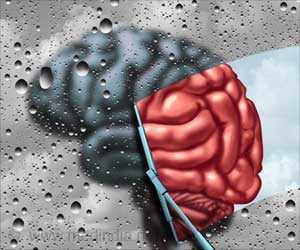Researchers reports that problems in spatial navigation can also be detected in people with a genetic risk for Alzheimer's.

‘The objective of this experiment was to find out which brain processes play a role in path integration.’





"If you get up at night and want to find your way to the bathroom in the dark, you need - in addition to knowing the arrangement of your own home - a mechanism that tracks your own position in the room without using external cues," illustrates Anne Bierbrauer. This ability is known as path integration.
Researchers assume that the activity of so-called grid cells in the entorhinal cortex is responsible for this ability. When navigating a spatial environment, these cells display a unique, regular activity pattern.
It has long been known that the entorhinal cortex is crucial for spatial navigation. It is also one of the first regions of the brain affected by Alzheimer's disease.
In a previous study, the researchers had shown that grid cells exhibit altered functioning in people at genetic risk for developing Alzheimer's disease.
However, the test persons did not show any obvious navigation problems. "We assume that they used compensatory mechanisms to find their way," explains Nikolai Axmacher, "presumably via external cues in their surroundings. In Bochum, for example, the winding tower of the Bergbau-Museum can be seen in many places, as it is often visible over the rooftops of other buildings."
Advertisement
The researchers compared the navigation performance of 202 volunteers without genetic Alzheimer's risk and 65 volunteers with increased genetic risk. The latter had a specific expression of the gene for apolipoprotein E, the APOE-ε4 allele.
An additional group of test persons performed the same task while the researchers recorded their brain activity with functional magnetic resonance imaging.
The objective of this experiment was to find out which brain processes play a role in path integration. The team found grid cell representations in the entorhinal cortex to be specifically associated with navigation without external cues, which highlights the role of this brain region for path integration.
"In this study, we demonstrated a very specific deficit in healthy people with a genetically increased risk for Alzheimer's," concludes Lukas Kunz.
"In the future, such behavioural changes might perhaps help diagnose Alzheimer's disease earlier, before any serious symptoms appear." Researchers believe that drug therapies for Alzheimer's disease have so far failed, because the diagnosis is made too late.
Source-Eurekalert










